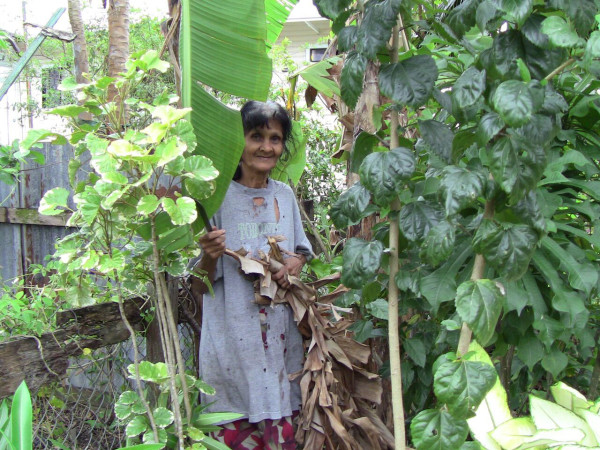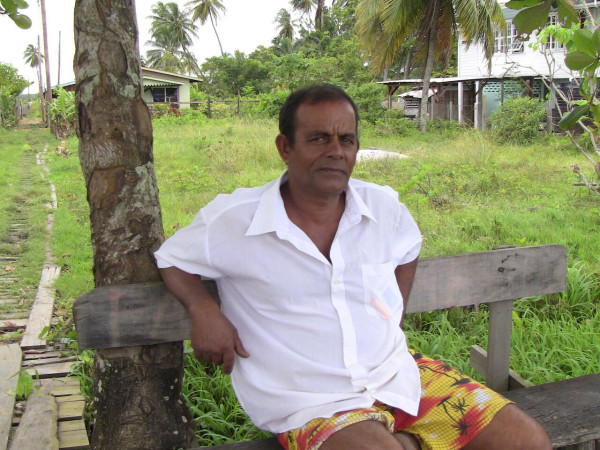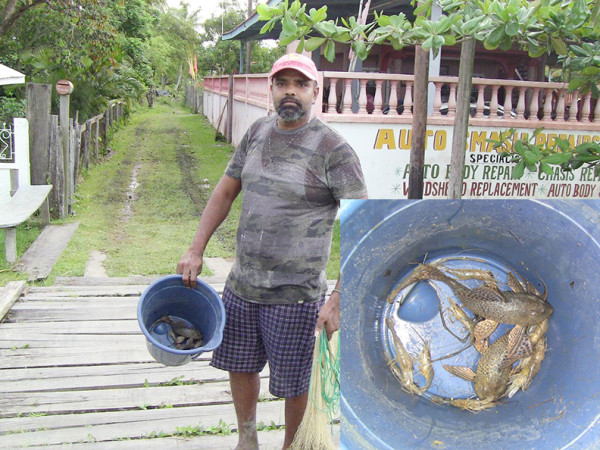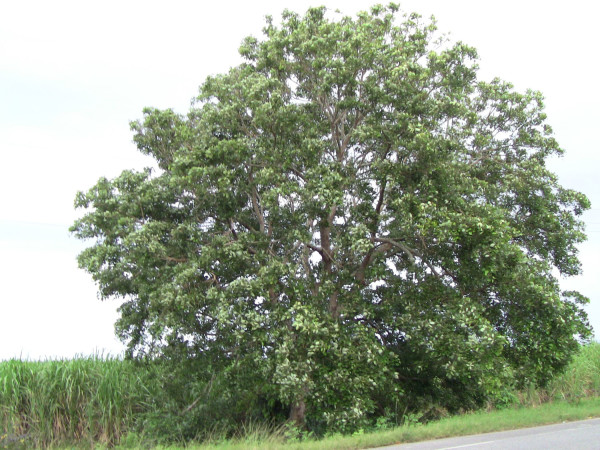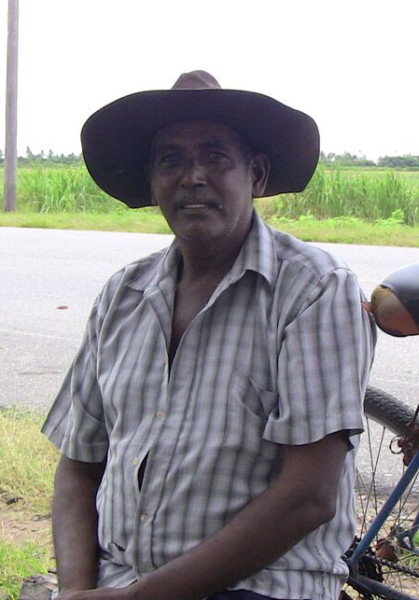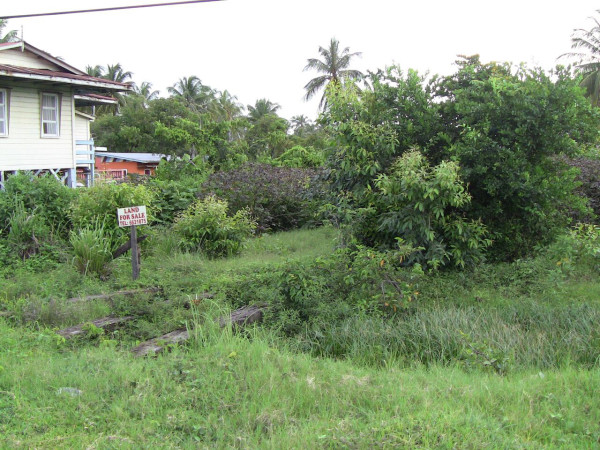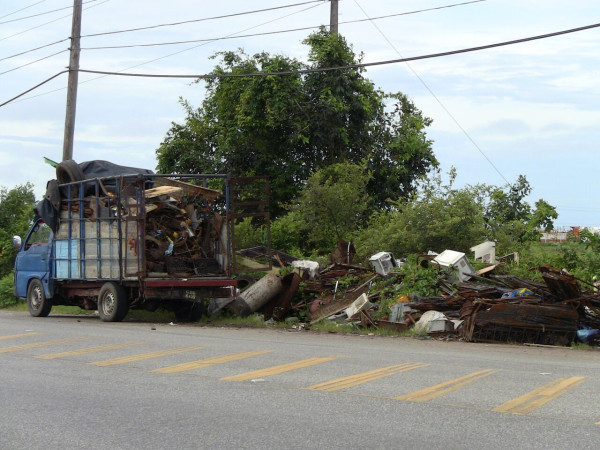Story and photos by Jannelle Williams
Some 7.5km from New Amsterdam the village of Palmyra begins with a cluster of houses that take on a housing scheme kind of look. But as one goes further into the village, the houses become more separated and the land on which they sit is larger. This, among other things, marks the distinction between the two sections of the village: Palmyra south being the cluster of houses with the new wave of villagers and Palmyra north being the sprinkle of sprawling properties owned by persons who can trace their heritage to the first settlers in the village.
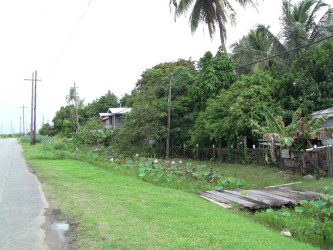
Nestled between the villages of Seawell and Number 2, Palmyra is said to be somewhere around 160 years old, and is a community of mostly third generation Indian Guyanese, descendants of East Indian indentured immigrants.
The village’s oldest resident, 92 years old Evelyn Ramroop, fondly known as Aunty Ivy, is not one of these descendants, but she was married to one. The woman, originally from Port Mourant on the Corentyne, moved into the village in 1940 upon her marriage and never moved out. According to her, Palmyra is a blessed place. “When I marry and come here, Palmyra was a nice place; quiet, the people were loving and kind and everything,” she said. She recalled that in those days, most of the villagers were into agriculture: rearing cattle, planting rice or cutting cane in the back dam. Pointing to the cane fields across the road from her house, Aunty Ivy said “1939 was the first time they plant sugar cane, so when I marry and come in 1940 the canes were very small and now growing.” She noted that at that time transportation was not readily available and the men used to walk to work. “They would leave home like 4.30 am and walk to work, depending on the distance,” she stated.
She further recalled that they would use a bridge not too far from the village to gain entry into the cane fields, and while waiting on the bridge for instructions on which area they would be working that particular day, Ramroop said “if the people them hear somebody dead every man turn back.”
This, she said, was testimony to the unity in this village. “A stranger can’t come and pass on this road; everybody wants to know. ‘You see that body gal? Who is that body?’ People would ask,” she said. At that time the village had a lot more families living in it, compared to now. However, with less people now, Aunty Ivy was sad to say the village is not as closely knitted as it used to be. “Now you know the young generation them, one two nice and then one two of them stiff up, only that,” she remarked. She was however, quick to add, “With all that funniness when we meet together we all one big family. The way them treat me is so nice that my own children don’t even know when they plan birthday party for me.”
Aunty Ivy has vacationed in the USA on several occasions, as some of her children reside there. But she always returns to Palmyra where she feels at home.
Palmyra has all the basic amenities, including electricity, potable water and telephone services, as well as street lights. But Aunty Ivy remembers a time when those things were far from their access. “We use to get water from village council. They would send donkey cart and give each house two buckets of water in the morning and two in the evening so everybody had them pond in the backyard and would use it to wash and do other house chores,” she recalled. The water supplied by village council was used for drinking and cooking.
As it relates to crime, Aunty Ivy said, “In those days we had kitchen thief, not kick-down-the-door bandits. They would come and if you get an overnight food they would eat it and carry away your pots and things like that.” This she referred to as boys just being wicked.
A couple of years ago, however, the village was plagued with kick-down-the-door bandits who would rob villagers of their possessions. The installation of street lights and the increase in police patrols have served as a deterrent to criminal activities and hence a reduction in breaking and entering and robberies has been recorded.
Nonetheless, 55-year-old Nazim Karim believes that much more should be done to fight crime in the village as according to him there is “much cattle stealing in the village.” The farmer explained that while some of the villagers have gravitated to office work, most of the residents do cattle rearing at the backlands. Unfortunately, they are hindered from successfully making a livelihood since cattle rustling is very prevalent in the area. “We don’t know if it’s people from inside or outside of the village but a lot of cattle stealing does happen and the police need to do something about it,” he said.
Another thing Karim believes should be looked into is the possibility of establishing a recreational centre, kindergarten school and health centre in the village. According to him, these things are missing and badly needed in the village. “I want to know if they still will use the piece of land at the junction or if we can put a community centre and ball field there,” he said. The previous government had earmarked a portion of land in the village for the erection of an Arrival Day Monument. However, it is unclear if that plan will be executed by the new APNU+AFC coalition government.
Karim is therefore suggesting that the land be used to benefit the village, in the event that the plans to build the monument are scrapped. “Afternoon time, children can go and play. We don’t have any recreational centre or anything here, and the children need somewhere to play rounders, and football and thing,” he stated.
In addition to the recreational centre, Karim said a health centre is also needed since villagers have “to go from here till New Amsterdam Hospital and pregnant mothers got to either go to Cumberland Health Centre or Bohemia Health Centre.”
Karim’s neighbour, Krisendat Gowkarran, 58, added his two cents by stating that the village could benefit from a boom in economic and social activities. Referring to his childhood growing up in the village, he said, “We use to play cricket and ketch fish, and I see a little change but not much since then.” The only change he has noticed over the past five decades is that “The place has become a bushy area now.” Elaborating, he said, “The whole village at the back is full bush and it was never like that before.” He explained that the village was kept clean by the self-help of the older generation, but that now most of them have died, leaving their properties to children who have since migrated. He added, “Some of the lands sell out and some still for sale so it just turned a jungle cause people not cleaning it.” This state of affairs, he lamented, has created a “safe haven for criminals to hide in the dense bushes.”
This would not have been a problem for the village he opined, had the previous government sought to stimulate growth and development, instead of stagnate it. “We need more businesses and we were getting development but the last government stopped it.” Elucidating his claims, he said, “On that same bridge road, Sukhpaul [a popular businessman] was going to open a gas station there and a man wanted to build a mall and thing, but all flap. The government said no [to the ideas]. The bridge company doesn’t want anything on the access road.” This, he believes, is responsible for the lack of economic growth in the village, and which he hopes will be rectified by the change in regime. (Continued next week)
